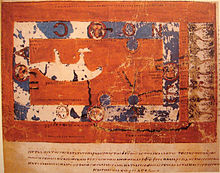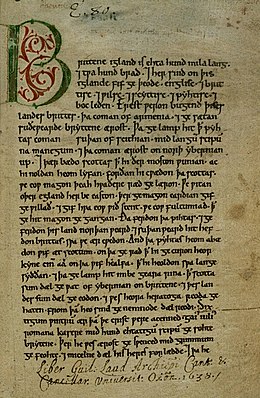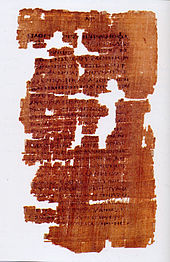Questioning the Christian Dogma
The Enlightenment, the intellectual movement that shook Europe, stretches from the 1630s to the eve of the French revolution in the late eighteenth century. In those few years, Rene Descartes, Thomas Hobbes, Baruch Spinoza, John Locke, Gottfried Wilhelm Leibniz, David Hume, Jean-Jacques Rousseau, Voltaire, Edward Gibbon, Denis Diderot, and Pierre Bayle, the best-known modern philosophers, made their mark. Most of them were amateurs: none had much to do with universities. They explored the implications of the new science and of religious upheaval, which led them to reject many traditional teachings and attitudes, and it left a spiritual vacuum in the realms of Christianity in Europe, questioning its dogma.
The seeds were sown in the seventeenth century when some people came to think that history was the wrong way around. Francis Bacon (1561-1626) was the first to crystallise this thought. Among the many that echoed Bacon, the French scientist Blaise Pascal (1623-1662) put it best in his writings about the vacuum.
Pascal's vacuum was not the spiritual one-In 1646, Pascal learned that an Italian, Evangelista Torricelli, had inverted a long glass tube filled with mercury into a bowl also filled with mercury, and the result was some mercury left standing in the tube with a vacuum above it. Torricelli thought that the mercury in the tube was kept up by the weight of the atmosphere pressing down on the bowl. Both claims were highly contested--at this time, the air was believed to be natural light, and Nature was supposed to abhor a vacuum.
Pascal sided with Torricelli, and he reasoned that if the atmosphere had weight, then less atmosphere should have less weight, and the level of mercury in the barometer should be lower. Accordingly, on 19 September 1648, Pascal engaged his brother-in-law Perier to climb the Puy de Dôme, the tallest mountain in central France, carrying a Torricellian tube with its bowl of mercury all the way up. Sure enough, as Perier climbed higher, the level of the mercury fell. This experiment, which convincingly demonstrated that air has weight, is one of the most famous experiments performed during the period of the Scientific Revolution. |
| John Locke |
John Locke was a late starter: It was not until he was 57 that he published his main works. the Essay Concerning Human Understanding, Two Treatises of Government and the Letter Concerning Toleration, all of which came out in 1689. He was born in the same year as Spinoza and his first 45 years were far from idle. The Second Treatise of Government has been called an inspiration not only for the French revolution but for the American constitution, as well. His essay was heralded particularly in France, as the philosophical counterpart of Newton's Principia, which had been published in 1687. They were the twin prophets of Enlightenment.
In questions of religion, Locke's idea was that theological doctrines must be answerable to the court of reason: "Reason must be our last Judge and Guide in every Thing." He said that some truths, such as the resurrection of the dead, are "Above Reason". (2) In a tract entitled The Reasonableness of Christianity, published in 1695, Locke argued that nothing in the scriptures was contrary to reason and that God had generously expressed himself in terms that can be understood even by "the poor of this World, and the bulk of Mankind." (3)
Locke's rationalistic approach to religion did not go as far as that of his contemporary, 25-year-old John Toland, whose Christianity Not Mysterious was published the next year. Toland was condemned in parliament and threatened with arrest in Ireland for asserting that doctrines which were "above reason" were as suspicious as those which were contrary to reason and that Christianity is better off without them. (4) Locke was regularly accused by conservative churchmen of indirectly encouraging atheism in various ways, and of not having enough to say about the Trinity. On the question of religious tolerance, Locke argued for the same sort of freedom of belief that Spinoza had defended: "men cannot be forced to be saved", he wrote in his Letter Concerning Toleration, "they must be left to their own consciences." (5)
Some date the beginning of the Enlightenment to the publication of French philosopher René Descartes' Discourse on the Method in 1637, featuring his famous dictum, Cogito, ergo sum ("I think, therefore I am"). Others cite the publication of Isaac Newton's Principia Mathematica (1687) as the culmination of the Scientific Revolution and the beginning of the Enlightenment. European historians date its beginning with the death of Louis XIV of France in 1715 and its end with the 1789 outbreak of the French Revolution. Many historians now date the end of the Enlightenment as the start of the 19th century, with the latest proposed year being the death of Immanuel Kant in 1804.
The Scientific Revolution was a series of events that marked the emergence of modern science during the early modern period, when developments in mathematics, physics, astronomy, biology (including human anatomy) and chemistry transformed the views of society about nature. It took place in Europe starting towards the second half of the Renaissance period, with the 1543 Nicolaus Copernicus publication De revolutionibus orbium coelestium (On the Revolutions of the Heavenly Spheres) often cited as its beginning. (7)
The era of the Scientific Renaissance focused on recovering the knowledge of the ancients and is considered to have culminated in the 1687 Isaac Newton publication Principia which formulated the laws of motion and universal gravitation, thereby completing the synthesis of a new cosmology. The subsequent Enlightenment saw the concept of a scientific revolution emerge in the 18th-century work of Jean Sylvain Bailly, who described a two-stage process of sweeping away the old and establishing the new. (8)
Philosophers and scientists of the period widely circulated their ideas through meetings at various places. The Enlightenment undermined the authority of the monarchy and the Catholic Church and paved the way for the political revolutions of the 18th and 19th centuries. A variety of 19th-century movements including liberalism, communism, and neoclassicism trace their intellectual heritage to the Enlightenment. (9)
The central doctrines of the Enlightenment were individual liberty and religious tolerance, in opposition to an absolute monarchy and the dogmas of the Church. The Enlightenment was marked with increased questioning of religious orthodoxy—an attitude captured by Kant's essay Answering the Question: What is Enlightenment, where the phrase Sapere aude (Dare to know) can be found. (10)
The "Radical Enlightenment" (11) promoted the concept of separating church and state, (12) an idea credited to John Locke. (13) According to his principle of the social contract, Locke said that the government lacked authority in the realm of individual conscience, as this was something rational people could not cede to the government for it or others to control. For Locke, this created a natural right in the liberty of conscience, which he said must therefore remain protected from any government authority.
These views on religious tolerance and the importance of individual conscience, along with the social contract, became particularly influential in the American colonies and the drafting of the United States Constitution. (14) In a letter to the Danbury Baptist Association in Connecticut, Thomas Jefferson called for a "wall of separation between church and state" at the federal level. Jefferson's political ideals were influenced by the writings of Locke, Bacon, and Newton, (15) whom he considered the three greatest men that ever lived. (16)
 |
| Bacon |
 |
| Martin Luther |
 |
| Jan Hus |
 |
| Joan of Arc |
The majority of textbooks on British history make little or no mention of the English Enlightenment, although they do include coverage of major intellectuals such as Joseph Addison, Edward Gibbon, John Locke, Isaac Newton, Alexander Pope, Joshua Reynolds, and Jonathan Swift. (48) Freethinking, a term describing those who stood in opposition to the institution of the Church, and the literal belief in the Bible, can be said to have begun in England no later than 1713 when Anthony Collins wrote his "Discourse of Free-thinking", which gained substantial popularity. This essay attacked the clergy of all churches and was a plea for deism.
The reasons for this neglect were the assumptions that the movement was primarily French-inspired, that it was largely a-religious or anti-clerical, and that it stood in outspoken defiance of the established order. (49) After the 1720s, England could claim thinkers to equal Diderot, Voltaire, or Rousseau. However, its leading intellectuals such as Gibbon, (50) Edmund Burke and Samuel Johnson were all quite conservative and supportive of the standing order. The reason given was that Enlightenment had come early to England and had succeeded such that the culture had accepted political liberalism, philosophical empiricism, and religious toleration, positions which intellectuals on the continent had to fight against powerful odds. Furthermore, England rejected the collectivism of the continent and emphasized the improvement of individuals as the main goal of enlightenment. (51)
2. ibid, p 116
3. ibid, p 117
4. ibid
5. ibid
6. Zafirovski, Milan (2010), The Enlightenment and Its Effects on Modern Society, p. 144
7. Juan Valdez, The Snow Cone Diaries: A Philosopher's Guide to the Information Age, p 36
8. Cohen, I. Bernard (1976). The Eighteenth-Century Origins of the Concept of Scientific Revolution. Journal of the History of Ideas. 37 (2): 257–88.
9. Eugen Weber, Movements, Currents, Trends: Aspects of European Thought in the Nineteenth and Twentieth Centuries (1992).
10. Gay, Peter (1996), The Enlightenment: An Interpretation, W.W. Norton & Company
11. Israel, Jonathan I. (2011). Democratic Enlightenment: Philosophy, Revolution, and Human Rights 1750–1790. Oxford University Press. p 10-11
12. ibid, pp. vii-viii
13. Feldman, Noah (2005). Divided by God. Farrar, Straus, and Giroux, p. 29: "It took John Locke to translate the demand for the liberty of conscience into a systematic argument for distinguishing the realm of government from the realm of religion."
14. ibid, p 29
15. Sorkin, David. Hayes-Robinson Lecture: Enlightenment and Faith: Debates among Protestants, Catholics and Jews in Eighteenth-Century Europe, 2008, p. 10
16. Susan Manning, Francis D Cogliano, ed., The Atlantic enlightenment, 2008, Routledge p. 14
17. Heinz-Gernhard Haupt, Religion and Nation in Europe in the 19th Century: Some Comparative Notes, Estudos Avancados, 22 (62), 2008
18. Ozouf, M. The Revolutionary Party: 1789-1799. Paris: Gallimard, 1976, quoted in Heinz-Gernhard Haupt, Religion and Nation in Europe in the 19th Century: Some Comparative Notes, Estudos Avancados, 22 (62), 2008, quoted in Heinz-Gernhard Haup
19. Martin, J. C. Violence and Revolution: Essay on the Birth of National Myth, Paris: Seuil, 1996
20. Elias, N. Studies on the Germans: Power Struggles and Culture Development in 19th and 20th Centuries. Jahrhundert. Frankfurt: Suhrkamp, 1989. quoted in Heinz-Gernhard Haup
22. Hayes, C. J. H. Essays on Nationalism. New York: Cambridge University Press, 1926
23. Temps Modernes, v.550, May 1992, quoted in Heinz-Gernhard Haup
24. Haupt H G & Langewiesche, D ed. (2001, 2004), ) Nation und Religion in Deutschland. p.293-332.
25. Burleigh, M. Earthly Powers. The Clash of Religion and Politics in Europe from the French revolution to the Great War. New York: Cambridge University Press, 2005 (2005),
26. Martin, 1996, quoted in Heinz-Gernhard Haup
27. McManners, John (1972), Church and State in France-1870-1914, Oxford, p.2327-58
28. Mayeur, Separation of Church and State (1966), quoted in Heinz-Gernhard Haup
29. Papenheim, Margot, 2003, p.202-36, quoted in Heinz-Gernhard Haup
30. Verocci, G, 1997, Places of memory, Characters and dates of United Italy, p.89, quoted in Heinz-Gernhard Haup
31. Hroch, The Europe of Nations, 2005, p.55, quoted in Heinz-Gernhard Haup
32. Schulze-Wessel, 2004, p.135-50, quoted in Heinz-Gernhard Haup
33. Burleigh, M. Earthly Powers. The Clash of Religion and Politics in Europe from the French revolution to the Great War. New York: Cambridge University Press, 2005 (2005), p.311 ss
34. Kuhlemann (2004), p.27-63, quoted in Heinz-Gernhard Haup
35. Laube, 2001, p.293-332, quoted in Heinz-Gernhard Haup
36. ibid, p.302ss
37. ibid
38. Winock M, 1997, p.4427-73, quoted in Heinz-Gernhard Haup
39. Ben Amos, 2002, Funerals, Politics, and Memory in Modern France, 1789-1996. Oxford University Press, 2002
40. Burleigh, 2005, p.365
41. Hobsbawm & Ranger, ed, (1992), Invention of Tradition, Cambridge
42. Mollenhauer D, 2004, p.228, quoted in Heinz-Gernhard Haup
44. Watson, William E. (2003). Tricolor and Crescent: France and the Islamic World (2003), Praeger Publishers
45. Amini, Iradj (1999). Napoleon and Persia, Mage Publishers
50. Karen O'Brien, English Enlightenment Histories, 1750–c.1815 in José Rabasa, ed. (2012). The Oxford History of Historical Writing: Volume 3: 1400–1800. Oxford, England: OUP. pp. 518–535
51. Roy Porter, The Creation of the Modern World: The Untold Story of the British Enlightenment (2000), pp. 1–12, 482–484.
52. Gillispie, Genesis and Geology, Cambridge, 1951, p 10, quoted in Norton Garfinkle, Science and Religion in England 1790-1800: The Critical Response to the Work of Erasmus Darwin, Journal of the History of Ideas, (June 1955) vol 16, no 13p 376-388
53. Morris Quinlan, Victorian Prelude, New York, 1951, W L Mathieson, England in Transition,1789-1832, London, 1920
54. Basil Willey, The Eighteenth Century Background, (New York, 1941, p 136)












